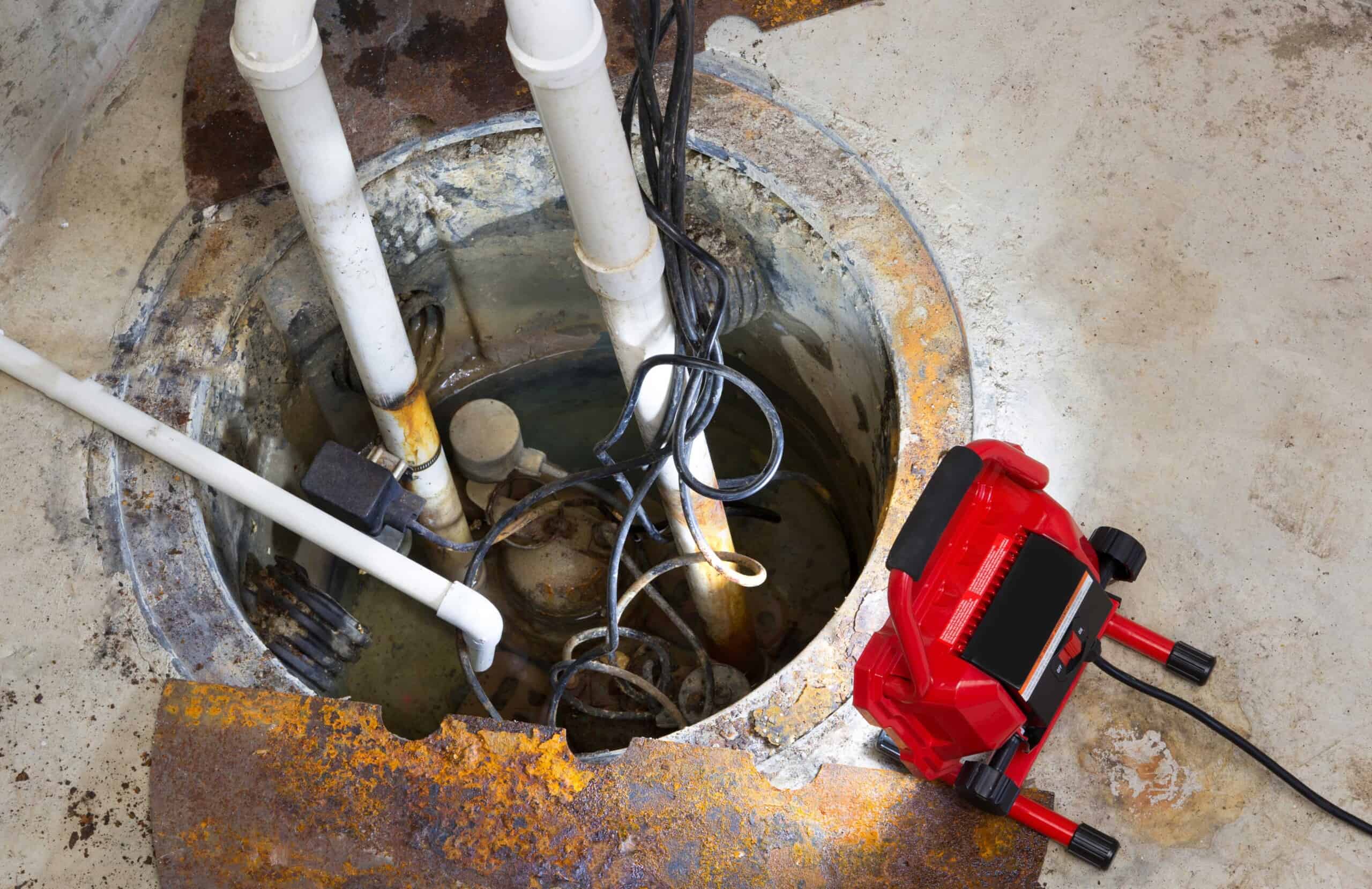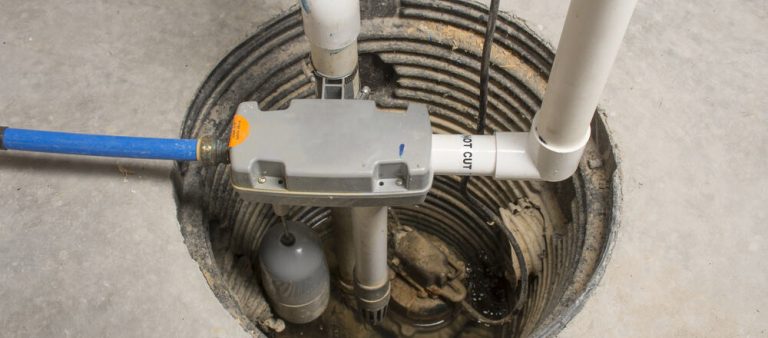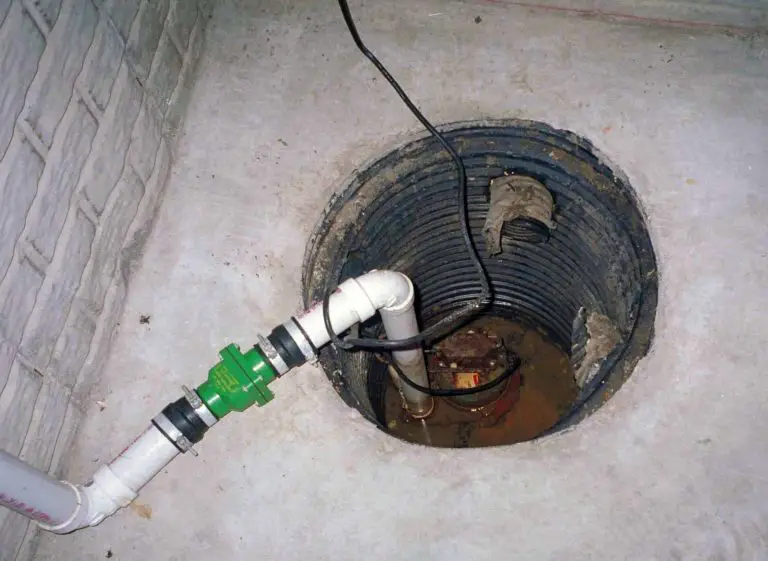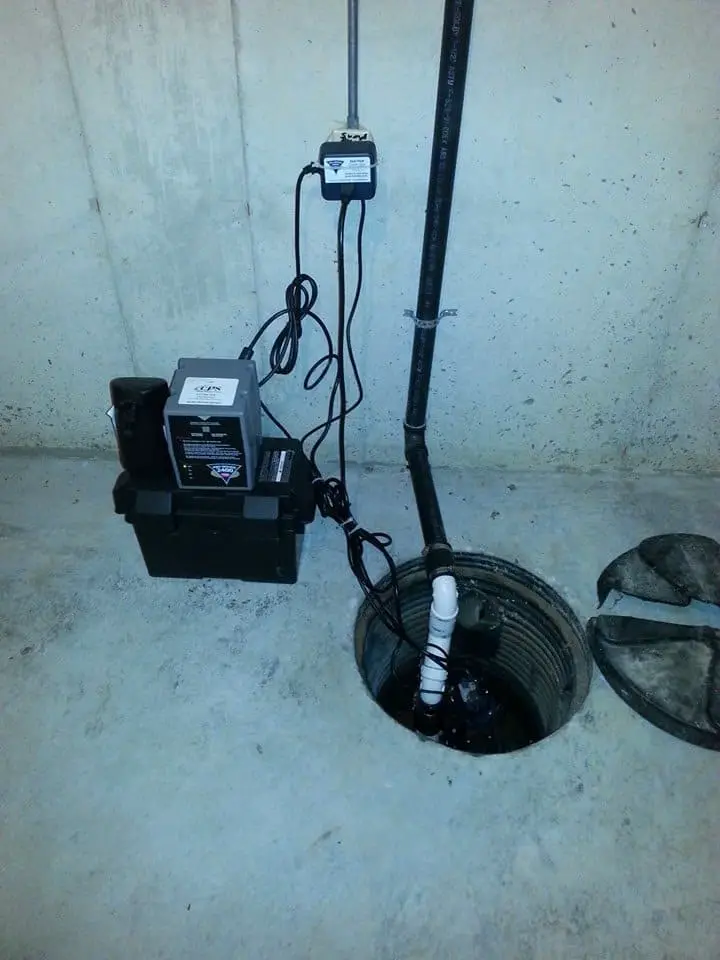How Do You Troubleshoot a Sump Pump
If your sump pump isn’t working, there are a few things you can do to troubleshoot the problem. First, check that the pump is plugged in and that the outlet it’s plugged into is working.
Next, check the float switch to make sure it’s not stuck in the “on” position. If the float switch is stuck, you can try gently moving it up and down to see if it will release.
If neither of these solutions work, you may need to replace the float switch. If your sump pump has stopped working, there are a few things you can do to troubleshoot the problem.
First, check to see if the pump is plugged in. Next, check the float switch to see if it is stuck in the “on” position.
Finally, check the discharge pipe to make sure it is not blocked. If you cannot find the problem, you may need to call a plumber.
Sump Pump Not Working? It Might Be Air Locked!
How to Tell If Sump Pump is Clogged
If your sump pump is running constantly or if it seems to be working harder than usual, it may be clogged. There are a few ways to tell if your sump pump is clogged: 1.
Check the inlet screen – The inlet screen is located where the water enters the sump pit. If this screen is clogged, it will restrict the flow of water into the pit, causing the pump to work harder and run for longer periods of time.
2. Check the discharge line – The discharge line carries water away from the sump pit after it has been pumped out.
If this line is clogged, water will back up into the pit and eventually overflow. 3.
Listen for strange noises – If you hear gurgling or bubbling noises coming from your sump pit, it could be an indication that there is something blocking the flow of water through the pump. If you suspect that your sump pump is clogged, it’s important to take action right away to avoid flooding and other damage in your home. You can try clearing the obstruction yourself or contact a professional for assistance.
How to Reset a Sump Pump
Are you having problems with your sump pump? If so, you’re not alone. Many homeowners have issues with their sump pumps from time to time.
Luckily, resetting a sump pump is usually a pretty easy fix. If your sump pump won’t turn on, the first thing you should do is check the power source.
Make sure that the pump is plugged in and that there is power running to it. If everything looks good there, the next step is to check for any clogs or debris in the intake screen or discharge hose.
If you find anything blocking the flow of water, remove it and try again. If your sump pump turns on but doesn’t seem to be working properly, it may just need a reset.
To do this, simply unplug the pump and then plug it back in again. Once it’s plugged back in, flip the switch to “on” and wait a few minutes to see if that does the trick. If your sump pump still isn’t working after trying these simple troubleshooting tips, then it’s time to call a professional for help.
Sump Pump Troubleshooting Youtube
If you have a sump pump, it’s important to know how to troubleshoot it in case of problems. There are a few things that can go wrong with a sump pump, and luckily, most of them are easy to fix.
One problem that you might encounter is that the pump isn’t turning on. This could be due to a number of factors, including a tripped circuit breaker or a power outage.
If the breaker has been tripped, simply reset it and see if the pump starts working. If there has been a power outage, you’ll need to wait for power to be restored before the pump will start working again.
Another problem that you might encounter is that the pump isn’t pumping water out fast enough. This could be due to a clogged intake screen or impeller.
To clean the intake screen, simply remove it and rinse it off with water. To clean the impeller, you’ll need to disassemble the pump and remove any debris that’s blocking it. If your sump pump still isn’t working properly after troubleshooting these issues, it’s best to call a professional for help.
Sump Pump Not Working
If your sump pump isn’t working, it could be because of a few different issues. First, check to make sure that there is power going to the pump.
If the pump is plugged in and there is still no power, you may need to replace the fuse or circuit breaker. Next, check for any obstructions in the intake or discharge lines.
If there are any blockages, clear them out and try again. Finally, if the pump still isn’t working, it may need to be replaced.
Sump Pump Clogged With Sediment
If your sump pump has stopped working, it may be because it’s clogged with sediment. Sediment can build up in the pump over time and eventually cause it to fail.
If you think your pump is clogged, there are a few things you can do to clean it out. First, unplug the pump from the power source and remove it from the sump pit.
Next, disassemble the pump so you can access the impeller. The impeller is what pumps water out of the pit, so if it’s clogged, the pump won’t work properly.
Use a brush or other tool to clean any sediment out of the impeller and make sure it’s clear before reassembling the pump. If your sump pump still isn’t working after cleaning out the impeller, there may be another issue causing it to fail. It’s a good idea to call a plumber or other professional to diagnose and repair any other problems with your sump pump.
Sump Pump Not Working Basement Flooded
If you have a sump pump in your basement and it’s not working, chances are your basement is flooding. A sump pump is designed to remove water that has accumulated in a sump pit, typically located in the lowest part of your basement.
If your sump pump isn’t working, the first thing you should do is check the power source. If the pump is plugged into an outlet, make sure the circuit breaker hasn’t tripped.
If the pump runs on batteries, check to see if they need to be replaced. Once you’ve ruled out a power issue, take a look at the float switch.
This device turns the pump on when water levels rise and off when they fall. A stuck float switch can prevent the pump from turning on even when there’s water in the pit.
If neither of these issues is to blame, then it’s likely that something is wrong with the actual pumps. It could be something as simple as a clogged intake screen or impeller (the part of the pump that moves water).
Or it could be a more serious problem like a burnt-out motor or cracked housing. Either way, you’ll need to call in a professional to diagnose and repair the issue before your basement floods again.
Can You Shower If Your Sump Pump is Not Working
If your sump pump is not working, you should not shower. This is because your sump pump is responsible for removing water from your basement or crawl space.
If it is not working, water can build up and cause flooding. In addition, the water that does build up can be contaminated and pose a health risk if you come into contact with it.
Sump Pump Running But Not Pumping
If your sump pump is running but not pumping, there are a few possible explanations. The most common reason for this problem is that the pump’s impeller, or the spinning component that pushes water out of the sump, is clogged with debris.
If this is the case, you can usually clear the impeller by disassembling the pump and using a small brush to remove any obstructions. Another possibility is that the water level in your sump pit is too low for the pump to function properly.
This can happen if you’ve experienced a prolonged dry spell or if you have a leak somewhere in your home that’s causing water to drain from your sump pit faster than it can be replenished. In either case, you’ll need to raise the water level in your sump pit before your pump will start working again.
Finally, it’s possible that your sump pump has simply worn out and needs to be replaced. If your pump is more than a few years old, or if it’s been used frequently during heavy rainfalls, it may have reached the end of its lifespan. Fortunately, replacing a sump pump isn’t typically a very expensive repair.

Credit: www.lenoxplumbing.com
What are Common Sump Pump Problems?
There are a few common sump pump problems that you may encounter. If your sump pump is not working properly, it could be due to a clogged inlet screen or impeller, a damaged float switch, or a problem with the discharge pipe.
If the inlet screen or impeller is clogged, the water will not be able to flow through the pump and will cause it to overheat. This can damage the pump and shorten its lifespan.
To prevent this from happening, make sure to regularly clean the inlet screen and impeller. The float switch is what turns the pump on when the water level reaches a certain point.
If this switch is damaged, the pump will not turn on and your basement could flood. To avoid this, check the float switch regularly and replace it if it is damaged.
Finally, if there is a problem with the discharge pipe, such as a blockage or leak, this can also cause flooding in your basement. Make sure to check the discharge pipe regularly for any issues and have it repaired or replaced if necessary.
What is the Most Common Reason for Sump Pump Failure?
The most common reason for sump pump failure is due to a power outage. If your sump pump is not receiving power, it will not be able to properly function. Additionally, if there is a problem with the float switch, this can also cause the sump pump to fail.
How Do You Tell If Your Sump Pump is Clogged?
If your home has a sump pump, it’s important to know how to tell if the pump is clogged. A clogged sump pump can cause flooding in your basement or crawl space.
There are a few signs that indicate your sump pump is clogged: 1. The float switch doesn’t rise: The float switch is what turns the sump pump on and off.
If the float switch isn’t rising, it could be because the impeller (the part of the pump that moves water) is stuck. This could be due to debris or a build-up of sediment.
2. Water leaks around the base of the unit: If you see water leaking around the base of your sump pump, it could mean that the seals are worn out or there’s a crack in the housing.
Either way, this indicates that water isn’t being pumped properly and needs to be fixed ASAP. 3.
You hear strange noises coming from the unit: If you start hearing strange noises coming from your sump pump, it’s likely because something is caught in the impeller or there’s another issue with moving parts inside the unit. In either case, you’ll need to open up the unit and take a look (or call a professional).
How Do I Test If My Sump Pump is Working?
If your home is prone to flooding or has a history of water damage, you may have a sump pump installed in your basement. This helpful device pumps water out of your basement and away from your home, preventing costly damage.
But how do you know if your sump pump is working properly? There are a few things you can do to test your sump pump and make sure it’s in good working order. First, pour a gallon or two of water into the pit where the sump pump is located.
You should see the float rise and trigger the pump to turn on. If the float doesn’t rise or the pump doesn’t turn on, there may be an issue with the float switch.
Next, check to make sure that the discharge pipe is clear and unobstructed. If there is any blockage, clear it out so that water can flow freely through the pipe.
Finally, test the power supply to the sump pump. Make sure that it’s plugged in and receiving power.
You can also use a multimeter to test for continuity between the plug prongs and ensure that there is no break in the electrical connection. If everything checks out and your sump pump appears to be working properly, congratulations! You’re one step ahead of potential water damage.
Conclusion
If your sump pump has stopped working, there are a few things you can do to troubleshoot the issue. First, check to make sure that the power is turned on and that the outlet is working.
Next, check the float switch to see if it is stuck in the “on” position. If so, simply move it back to the “off” position.
If the float switch is not the problem, then you may need to check the impeller to see if it is clogged with debris. Finally, if none of these solutions work, you may need to replace your sump pump altogether.




